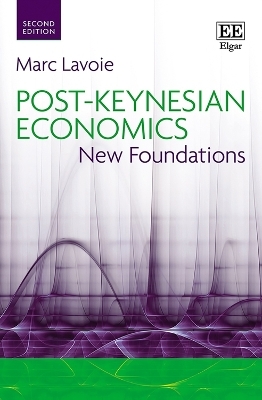
Crisis in the European Monetary Union
Routledge (Verlag)
978-0-367-87862-7 (ISBN)
Crisis in the European Monetary Union: A Core-Periphery Perspective provides a new framework for analysing the economic crisis that has shaken the Eurozone countries. Its analysis goes beyond the short-term, to study the medium and long-term relations between ‘core’ countries (particularly Germany) and Southern European ‘peripheral’ countries. The authors argue that long-term sustainability means assigning the state a key role in guiding investment, which in turn implies industrial policies geared towards diversifying, innovating and strengthening the economic structures of peripheral countries to help them thrive.
Offering a fresh angle on the European crisis, this volume will appeal to students, academics and policymakers interested in the past, present and future construction of Europe.
Giuseppe Celi is Associate Professor of Economics at the University of Foggia, Italy. He has been the coordinator of the university’s Economic Theory PhD programme. Andrea Ginzburg was Professor of Economic Policy at the University of Modena and Reggio Emilia, Italy. Dario Guarascio is a researcher in applied economics at the National Institute of Public Policy Analysis (INAPP), Italy. He is in charge of the research unit 'Skills and labour market transitions'. Annamaria Simonazzi is Professor of Economics at La Sapienza University of Rome, Italy. She is co-editor of Economia & Lavoro and on the editorial board of inGenere.
Introduction, Part 1: A medium term perspective, 1. The current Euro crisis: a faulty institutional construction, 1. Introduction, 2. The Werner Report and the idea of Europe, 3. The Snake and the EMS, 4. The bumpy road to the EMU, 5. The EMU’s institutional flaws, 6. In the crisis: bail-outs, politics, reforms, 7. Conclusions, 2. The European core-periphery divergent development paths before the crisis: 1999–2008, 1. Introduction, 2. Germany: from Europe's sick man to export superstar, 3. Wage moderation, 4. Housing: a ‘non-tradable’ sector?, 5. The construction of the Central European Manufacturing Core, 6. Conclusions, 3. France: the waning of a core country, 1. Introduction, 2. From dirigisme to statist liberalism, 3. The waning of a key sector: the automotive industry, 4. Conclusions, 4. The Eurozone’s double-dip recession: interpretations and policies, 1. Introduction, 2. A standard balance of payments crisis?, 3. The Target2 debate: a stealth bail-out?, 4. The unfolding of the crisis and the role of austerity, 5. The structural impact of the crisis, 6. Conclusions, 5. Inequality, poverty and imports: core, periphery and beyond, 1. Introduction, 2. Rich Germany, poor Germans, 3. Poor Southern Europe, poor Southern Europeans, 4. South of South: the case of the Italian Mezzogiorno, 5. Conclusions, 6. The network of European trade between core and periphery, 1. Introduction, 2. The European trade networks, 3. The structure of trade, 4. The evolution of the automotive industry in Europe, 5. Conclusions. Part II: European de-industrialization processes in a long-term perspective, 7. The weakening of the European growth engine, 1. Introduction, 2. The fading of the golden age, 3. Heterodox explanations of the fall in investment: industry a
| Erscheinungsdatum | 16.12.2019 |
|---|---|
| Reihe/Serie | Routledge Studies in the European Economy |
| Verlagsort | London |
| Sprache | englisch |
| Maße | 156 x 234 mm |
| Gewicht | 453 g |
| Themenwelt | Wirtschaft ► Volkswirtschaftslehre ► Finanzwissenschaft |
| Wirtschaft ► Volkswirtschaftslehre ► Makroökonomie | |
| Wirtschaft ► Volkswirtschaftslehre ► Wirtschaftspolitik | |
| ISBN-10 | 0-367-87862-3 / 0367878623 |
| ISBN-13 | 978-0-367-87862-7 / 9780367878627 |
| Zustand | Neuware |
| Haben Sie eine Frage zum Produkt? |
aus dem Bereich


